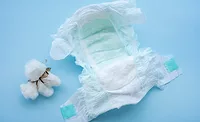Nonwovens Disposable Hygiene: A World of Opportunity for Adhesive Manufacturers and Dispensing Equipment Suppliers
Adhesive manufacturers and dispensing equipment suppliers can partner in helping disposable hygiene manufacturers efficiently produce higher quality products while reducing costs.
Today’s consumer wants it all—disposable hygiene products with high, consistent performance but at the lowest price. Producers strive to balance changing and increasing demands of consumers, sensitivity to sustainability, and the need to manage production costs and efficiency in order to remain competitive and profitable.
To meet these challenges, producers enjoin material and production equipment suppliers to support the production of increasingly sophisticated designs for the three major disposable hygiene segments: baby diapers and pants; feminine care products; and adult incontinence articles.
This highly competitive market is dominated by a few major global players, primarily household names such as Procter & Gamble, Kimberly-Clark, Unicharm and SCA. However, even these international titans have limited market penetration on a global scale. While the mature market geographies offer limited growth opportunities that are largely associated with slight demographic changes and changing product and production trends, many developing markets provide high-growth potential from a global perspective. In addition to opportunities related to changing demographics driving growth, these regions are also seeing an increase in income levels, along with cultural acceptance of products like adult incontinence articles.
Form and Function
The utilitarian function of disposable hygiene products is to acquire, transport and store liquids and/or solids while promoting comfort and health (see Figure 1). These products further share commonality in production process: high-speed converting of spool-based webs (nonwoven sheet, poly barrier films) and elastic-materials (stranded and stretch film).
While the basic function of disposable hygiene products has long been the same, discretion and comfort are becoming increasingly important. The trend is for disposable hygiene articles to be more “garment-like” or “less obvious” that they’re being worn. This trend is especially important in adult incontinence products, as active seniors do not want to be known to be wearing “diapers”—either by the bulkiness associated with traditional disposable diapers or with the plastic “rustling” sound that indicates a diaper is being worn. This “garment-like” trend translates to specific characteristics being designed for and implemented:
• Thinner and softer
• Better fitting
• Feature enhancements (e.g., odor control, wetness indication, lotions to promote dermal health, etc.)
Product design, materials used and production processes are all factors that contribute to cost effectively meeting these changing needs. Lighter-gauge substrates, advanced materials and finishes, increased use of stretch films and elastics, and the addition of specialty additives and/or adhesive formulations all support high-performing, garment-like disposable hygiene products. However, they can all have their own challenges—both in processing/handling and in how they interact with other material components.
Thinner substrates, for example, can be more susceptible to bleed-through or strike-through by adhesive, resulting in product defects and increased machine maintenance. Stretchable materials don’t always bond well, so special care must be taken when applying adhesives in order to retain the elasticity. And, these newer materials are often more costly than traditional materials, so there is an increased sensitivity to any scrap or wasted material.
In addition, disposable hygiene manufacturers are pressured to increase production rates and machine efficiency. Some high-speed machines are now producing 1,200 diapers per minute. The challenge is not just being able to keep up with that production speed, but to maintain consistent and reliable material positioning and bonding.
The Role of Adhesives
Adhesives bond and stabilize the various components that comprise the disposable hygiene products. As such, the single most important selection criterion is bond strength, as disposable hygiene products must hold up for their intended purposes.
Adhesives, however, also contribute to and influence product durability, performance, appearance, and comfort. Adhesive bonding has implications and consequences on both the finished products and the manufacturing process. These include:
• The cost and efficient use of adhesive
• The ability to support and enhance the production process
• Product quality—fit and integrity
• Product performance—waste retention and dermal health
Therefore, adhesives must be carefully selected by adhesive type, chemical makeup and process parameters.
Machinery Matters
Process parameters or requirements are also a major consideration of not only the adhesives but also the adhesive application/dispensing systems. Does the application need to be an edge-to-edge coating or just a single, narrow bead? A series of dots? Or something in between? Will adhesive be applied to a web surface—if so, what width? Or maybe an elastic strand? What temperature is needed to melt the adhesive vs. what temperature can the substrate handle? These are just a few of the myriad application and/or processing considerations.
A critical determination for adhesive application is whether to use contact or non-contact dispensing. Obviously, with contact coating, the dispense equipment is actually touching, or is in contact with, the substrate or product. Some benefits of contact application include very sharp cutoff and edge definition, as well as lower maintenance requirements. In non-contact coating, often referred to as spray, the adhesive is dispensed at some distance from the substrate or product. Some advantages with non-contact spray application include efficient adhesive use, improvement of specific performance features such as breathability or permeability, and the ability to work on irregular surfaces or fragile substrates.
The Future is Now
The main challenges for adhesive dispensing machine suppliers include maintaining precise placement at high production speeds, accommodating specialty formulations, and adapting to the use of increasingly thin and fragile substrates. These challenges can be addressed by increased process control of material delivery and placement. This “variation management” reduces unintended or undesirable change in the manufacturing process. Quite simply, it means to minimize production waste—waste of raw materials, product scrap, maintenance time and equipment usage. While complete elimination of waste is impossible, steps can be put in place to minimize it while actually improving the quality of the finished goods.
Much of the variation associated with adhesive dispensing occurs during transitional phases of production ramp-up or ramp-down. The ability to maintain a consistent adhesive supply during these phases can represent a significant challenge. Equipment and methods focused on variation management deliver a range of capabilities and return on investment in the form of less material, less time, and less maintenance while meeting or exceeding the expectations of demanding consumers.
One innovation in production variation management features system-integrated, closed-loop material delivery and dispensed pattern placement monitoring and control.* Material flow and dispensed position on the product can be measured in real time to understand how the actual material application compares to the desired and defined material requirements. If the comparison of actual to the requirement does not match, the system provides automatic compensation in real time to minimize any difference and maintain operation within specification.
Adapt and Succeed
Disposable hygiene products are a large global market with strong growth opportunities. While most of the growth will be achieved through the penetration of developing markets, opportunities are also available for those that adapt to changing market trends and drivers in mature markets. The key for adhesive manufacturers and adhesive dispensing equipment suppliers is to act as key partners in helping disposable hygiene manufacturers produce higher quality products faster, more efficiently, and at a lower cost.
*OptiBond™ solutions, developed by and available from Nordson Corp.
For additional information, contact the author at (770) 497-3455 or aramspeck@nordson.com, or visitwww.nordson.com/adhesive.
Looking for a reprint of this article?
From high-res PDFs to custom plaques, order your copy today!





